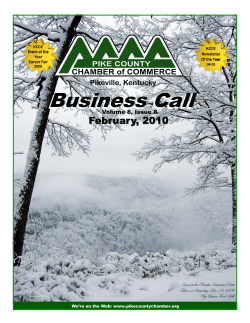
Seasonal Variation in Gill-Net Sample Indexes for Northern Pike
203-F North American Journal of Fisheries Management 15 :838-844, 1995 © Copyright by the American Fisheries Society 1995 Seasonal Variation in Gill-Net Sample Indexes for Northern Pike Collected from a Glacial Prairie Lake ROBERT M . NEUMANN1 AND DAVID W. WILLIS Department of Wildlife and Fisheries Sciences, South Dakota State University Brookings, South Dakota 57007, USA Abstract .-We captured 702 northern pike Esox lucius in 416 gill-net sets on 17 monthly occasions from July 1991 to June 1993 to examine seasonal variation in sampling data in Lake Thompson, South Dakota . Mean catch per effort (CPE) of northern pike 35 cm or longer differed significantly among months during both years . Mean CPE was lowest in winter and peaked in spring of both years . Size structure estimates were lowest during early spring and summer when males dominated samples and were highest during winter when females dominated samples . Northern pike 86 cm or longer were caught primarily in winter during ice cover. Relative weight (Wr) of male and female northern pike increased during fall, peaked in late winter, and declined during the spawning period . A similar pattern was found for the gonadosomatic index of female northern pike but not for males . Increases in the gonadosomatic index for males occurred entirely during fall . Gonadosomatic index and Wr were positively correlated for female northern pike, but the correlation was lower for males . We suspect our findings will be most applicable for interpreting northern pike population surveys made during narrow time periods near the southern portion of the species' range and for populations found in shallow, warmer water bodies . Biases associated with seasonal variation in sampling indexes such as catch per effort (CPE), body condition, and size structure should be considered when population assessments and management decisions are based on one-time samples . Understanding seasonal variations in these indexes can disclose seasonal biases in fish population assessment and provide information necessary for standardized sampling designs . In a recent survey of conservation agencies in the USA and Canada, gill nets were identified as the gear most frequently used to assess length frequency and relative abundance of northern pike Esox lucius (Fisheries Techniques Standardization Committee 1992) . Seasonal variations in northern pike indexes such as CPE (Casselman 1978 ; Diana 1980 ; Cook and Bergersen 1988) and body condition (Guy and Willis 1991 ; Headrick and Carline 1993) have been examined ; however, no information on seasonal variation of these indexes has been reported for northern pike captured in gill nets from natural prairie lakes . The objectives of this study were to examine seasonal variations in population indexes for northern pike collected in gill nets from a South Dakota glacial lake and to provide recommendations for sampling . 1 Present address : Department of Natural Resources Management and Engineering, University of Connecticut, Storrs, Connecticut 06269, USA . Study Site Lake Thompson is a shallow, natural lake in Kingsbury County in east-central South Dakota . The lake has a surface area of 6,573 ha, a maximum depth of 7 .0 m, and a mean depth of 2 .5 m . The lake expanded during the mid-1980s from a 4,000-ha wetland to its present size because of unusually high precipitation during that period . The high productivity of Lake Thompson is typical of natural lakes in the prairie region . Lake Thompson had a morphoedaphic index (total dissolved solids/mean depth) of 398 (Guy 1993), compared to means of 12 and 66 for 23 natural lakes and 294 reservoirs, respectively, in North America (Jenkins 1982) . Methods Northern pike were collected monthly on 17 occasions in July-October and December 1991, February-August, October, and December 1992, and February, April, and June 1993 . Collections were made with clear monofilament gill nets, 45 .7 m long by 1 .8 m deep, composed of 7 .6-m panels with bar mesh measurements of 19, 25, 38, 51, 70, and 89 mm . Four nets were set near shore during daylight hours for approximately 2-4 h near the middle of each month when samples where taken . Most nets were fished in the same area of the lake each month ; however, we sometimes had to relocate nets to avoid anglers and problems with strong wind and waves . Relocated nets were set in other nearshore areas similar to where they were usually set. Water depths at net locations ranged from about 1 .5 to 3.0 m. Nets were reset until 50 northern pike were caught or until the midmonth sampling period elapsed. The duration of each gill-net set was recorded to estimate CPE as catch per nethour. Captured northern pike were immediately measured to the nearest millimeter (total length), placed in plastic bags, packed on ice, and returned to the laboratory at South Dakota State University, where total body weight (nearest 1 g for fish less than 1 kg ; nearest 5 g for fish greater than I kg), sex, and gonad weight (nearest 0.1 g) were recorded . Water temperature was measured on each sample date throughout the study period with a Yellow Springs Instruments model 51B oxygen-temperature meter. Vertical temperature profiles (0 .5-m increments) were taken at a control site in the deepest part of the lake . Mean CPE (number per gill-net-hour) of stocklength (S, >_35 cm) northern pike was calculated for each sample period . Size structure was quantified with proportional stock density (PSD ; Anderson 1976) and with relative stock density of fish of preferred length (RSD-P) and memorable length (RSD-M). Proportional stock density is the percentage of S-length fish that are also quality length (Q, >_53 cm), RSD-P is the percentage of S-length fish that are preferred length (P, >_71 cm), and RSD-M is the percentage of S-length fish that are memorable length (M, >86 cm) (Gabelhouse 1984 ; Willis et al . 1993). Confidence intervals (95%) for stock density index values were determined by using the method of Gustafson (1988) and were provided as a descriptive measure of variability. Relative weight (Wr = 100 x individual fish weight/standard weight ; Wege and Anderson 1978) was calculated to index condition of northern pike . Relative weights were calculated with Willis's (1989) standard weight (Ws) equation for northern pike : Iog10Ws(g) = -5 .369 + 3.059 log10 TL(mm) . Two-way analysis of variance (ANOVA) was used to test for differences in Wr among S-Q, Q-P, and P-length northern pike among months . The gonadosomatic index (GSI ; 100 x gonad weight/total body weight) was used to measure gonad maturity . Mean GSI values were calculated according to sex and month . Data on CPE, Wr, and GSI were tested for normality with the Shapiro-Wilk statistic and inspection of normal probability plots (UNIVARIATE procedure, SAS Institute 1985) . Catch-per-effort data were transformed (log10) to better meet the assumption of normality for ANOVA, and all statistical tests were done on transformed data . Analysis of variance (GLM procedure, SAS Institute 1985) was used to test for differences in CPE, Wr and GSI. The least-significant-difference multiplecomparison test was used to identify differences among individual means when the overall model was significant (P < 0.05) . Regression analysis (REG procedure, SAS Institute 1985) was used to identify relations between water temperature and sire structure indices . Catch Rates Results and Discussion We captured 702 northern pike in 416 gill-net sets . Mean CPE of S-length northern pike was significantly different among months during both years (1991-1992, P < 0.01, F = 13 .50; 19921993, P < 0 .01, F = 5 .58) . In 1991-1992, CPE peaked during summer and early spring (Figure 1) . In 1992-1993, a similar spring peak in CPE was observed, but no summer peak was detected . Mean CPE values were lowest during winter of both sampling years. Peaks in CPE of northern pike in Lake Thompson during spring were most probably associated with spawning activity . Casselman (1978) and Diana (1980) also found catch rates of northern pike caught in gill nets to be higher during spring than summer or fall . Cook and Bergersen (1988) observed increased activity of ultrasonically tagged northern pike that was related to spawning in April and May in Eleven Mile Reservoir, Colorado . A spring peak in catch rates was also observed for northern pike captured in trap nets (Guy and Willis 1991) in a South Dakota natural lake . We believe that concentration of smaller northern pike in aquatic macrophytes near the sampling locations boosted CPE in summer during the first year of our study . Northern pike have been shown to select vegetated habitats in lakes (Chapman and Mackay 1984 ; Cook and Bergersen 1988) . Northern pike (44-63 cm total length) tagged with ultrasonic transmitters increased their use of isolated nearshore (<200 m from shore) patches of aquatic macrophytes in Lake Thompson during midsummer (Neumann 1994). During the second year of our study, aquatic macrophytes were not as abundant as in the first year, and no summer peak in CPE was observed . Therefore, the influence of cover such as vegetation should be considered when one assesses CPE data or chooses standard sampling locations. Nevertheless, a lack of a summer peak in CPE during the second year may also have resulted from growth of the dominant cohort to larger sizes or simply from random catch variation . Low CPE during winter may have been associated with reduced feeding activity resulting from decreased metabolism . However, Sammons et al . (1994) observed higher food consumption rates by northern pike in Lake Thompson during periods of ice cover than during other times of the year. Significant increases in growth (length) of northern pike in Lake Thompson have also been observed during winter (Neumann et al . 1994) . Alternatively, reductions in gill-net CPE during winter may have been related to the observed increase in water transparency (making the nets more visible to fish) or to increased stiffness of the net in cold water. Size Structure Seasonal trends in size structure of northern pike captured in gill nets were apparent during both years (Figure 2) . Proportional stock density, RSDP, and RSD-M were highest during winter. Size structure was lowest during early spring and sum- mer. Catches of M-length northern pike occurred primarily during winter. Proportional stock density, RSD-P, and RSD-M were inversely related to water temperature (Figure 3) . Therefore, during coldwater periods, CPE of northern pike captured in gill nets was low and size structure was high . During warmwater periods, CPE increased and size decreased . Only two of the 28 M-length northern pike captured during this study were caught during July and August . Seasonal differences in size structure of northern pike captured in gill nets may be attributed to sex- and size-related differences in activity and habitat use. Most M-length females were caught during winter, whereas most smaller males were caught during spawning and summer, as evidenced by the sex ratio of captured fish (Figure 4) . Therefore, sex ratio appeared to influence size structure of northern pike captured in gill nets . Of the 28 M-length northern pike captured during this study, 23 were captured during December and February . These large females may be more active during winter, seeking food to increase energy reserves in preparation for spawning . Male northern pike dominated gill-net samples during summer and fall, coinciding with the period of increased testicular development. Casselman (1975) found similar trends in the sex ratio of northern pike captured by gill nets in two regions in Ontario. In Lake Thompson, the low catch rates of M-length northern pike during summer indicated that larger northern pike were not vulnerable to gill nets fished during the daytime in nearshore areas . Also, large (75-97 cm) ultrasonically tagged northern pike (75-97 cm) moved offshore into deeper water during midday in summer, while smaller northern pike (44-63 cm) remained near shore (Neumann 1994). The frequency of northern pike males caught in gill-net samples peaked during spawning . Priegel and Krohn (1975) found that movement patterns of males and females differed during spawning in Gilbert Lake, Wisconsin . Males tended to move into and out of spawning areas faster than females, and males were the first to enter spawning areas . The high percentage of males caught during April in Lake Thompson may reflect greater activity of males during spawning . Lucas (1992) also found that acoustically tagged male northern pike were more active than females during the spawning period in Loch Davan, Scotland . Gonadosomatic Index and Body Condition Mean GSI values differed significantly (P < 0.01) among months . Gonadal growth began during fall . Testicular growth was completed by the end of fall, whereas ovarian growth continued until the fish spawned in spring when ovarian weight declined sharply. Thus, male GSI values were highest during the fall, and female GSI values were highest in spring (Figure 5) . Reduced GSI for males during winter may have resulted from increases in somatic weight during winter, as we explain later. No significant differences in mean Wr among length groups or interactions among lengths groups and months were found ; thus, evaluation of overall mean Wr over time was appropriate (Murphy et al . 1991). Significant differences (P < 0.01) in mean W, values were found among months for both males and females (Figure 6) . Both male and female northern pike exhibited increases in Wr beginning in fall and peaking in late winter. Guy and Willis (1991) and Headrick and Carline (1993) reported similar seasonal trends . The increase in W, of males during winter and lack of increase in GSI during the same period indicated that somatic weight of males increased during winter. Relative weight for both sexes declined after the fish spawned, which we attributed to loss of both gonad and somatic weight (Neumann 1994) . The GSI and W, for female northern pike showed a significant positive correlation (P < 0.01, r = 0 .68) but the correlation was poorer for males (P < 0.01, r = 0.23), likely because of the different seasonal patterns of Wr and GSI between males and females. However, Wr was lowest during spring and summer for both sexes. Sampling Considerations The CPE and size structure of northern pike caught in gill nets varied seasonally . Catch per effort peaked in spring of both sampling years. Size structure of northern pike captured in gill nets was highest during winter, when over 80% of the M-length northern pike were caught . Size structure was lowest during summer and during the spring spawning period . Size structure of northern pike captured in gill nets was influenced by the ratio of males to females in each sample . Understanding seasonal variations in sampling data will enable fisheries managers to assess northern pike populations in shallow, prairie lakes more accurately . Also, managers must understand biases associated with sampling northern pike at different times of the year before they design standard sampling schedules and evaluate long-term data sets . The most reliable time for fisheries biologists to assess northern pike populations with gill nets in natural lakes in South Dakota appears to be during late spring after spawning . Although the true size structure of northern pike in Lake Thompson was not known during our study, seasonal variability in size structure of pike captured in gill nets stabilized during May and June, as did CPE . This extended period may allow fisheries biologists to sample multiple lakes over a reasonable time period without seasonal variability substantially affecting among-lake comparisons. Although Wr was low during this time compared to its level in other months, recognizing typical seasonal patterns in W, can help fisheries managers interpret data that have been collected during standardized sampling . Because the data in this study were limited to a single northern pike population in a South Dakota natural lake, we hesitate to assume that the mechanisms causing these trends are the same in other lake types from different geographic regions . For example, in our study, northern pike longer than 75 cm were captured primarily during winter. Size structure was low during warmer months when large northern pike were apparently not vulnerable to gill nets set in nearshore habitats . Large northern pike may not inhabit nearshore areas in natural prairie lakes during summer because they are shallow and often devoid of aquatic macrophytes . In different lake types with deeper water near shore and prominent annual stands of littoral aquatic macrophytes, large northern pike may be more likely to inhabit these areas throughout the year, especially where water temperatures do not restrict their habitat during summer. Although the seasonal trends observed in our study may also occur in other systems in different regions, the timing and magnitude of the cycles may vary de- pending on the local climate. We suspect that our findings will be most applicable for northern pike populations near the southern portion of their range and for populations in shallow, warmer water bodies . Acknowledgments We thank C. Scalet, W. Duffy, and W. C. Johnson for critical reviews of this manuscript, and S. Sammons, L. Isaak, and S . Crow for help with field collection . Partial funding was provided by the South Dakota Department of Game, Fish and Parks through Federal Aid in Sport Fish Restoration, project F-15-R-1549; Electric Power Research Institute, project SFI/EPRI 91-08 ; and South Dakota State University . This manuscript was approved for publication by the South Dakota Agricultural Experiment Station as journal series number 2802 . References Anderson, R . O . 1976 . Management of small warm water impoundments . Fisheries 1(6) :5-7, 26-27 . Casselman, J. M. 1975 . Sex ratios of northern pike, Esox lucius Linnaeus. Transactions of the American Fisheries Society 104 :60-63 . Casselman, J . M. 1978 . Effects of environmental factors on growth, survival, activity, and exploitation of northern pike . American Fisheries Society Special Publication 11 :114-128 . Chapman, C . A ., and W. C . Mackay . 1984 . Versatility in habitat use by a top aquatic predator, Esox lucius L . Journal of Fish Biology 25 :109-115 . Cook, M . F, and E. P. Bergersen . 1988 . Movements, habitat selection, and activity periods of northern pike in Eleven Mile Reservoir, Colorado . Transac tions of the American Fisheries Society 117 :495502 . Diana, J . S . 1980 . Diel activity pattern and swimming speeds of northern pike (Esox lucius) in Lac Ste . Anne, Alberta . Canadian Journal of Fisheries and Aquatic Sciences 37 :1454-1458 . Fisheries Techniques Standardization Committee . 1992 . Fish sampling and data analysis techniques used by conservation agencies in the U .S . and Canada . American Fisheries Society, Bethesda, Maryland . Gabelhouse, D . W., Jr. 1984. A length categorization system to assess fish stocks . North American Journal of Fisheries Management 4 :273-285 . Gustafson, K . A . 1988 . Approximating confidence intervals for indices of fish population size structure . North American Journal of Fisheries Management 8 :139-141 . Guy, C . S . 1993 . Structure, dynamics, and movement patterns for white crappies in South Dakota waters. Doctoral dissertation . South Dakota State University, Brookings . Guy, C . S ., and D . W. Willis . 1991 . Seasona l variation in catch rate and body condition of f3ur fish species in a South Dakota natural lake . Journal of Freshwater Ecology 6 :281-292 . Headrick, M . R ., and R . F . Carline . 1993 . Restricte d summer habitat and growth of northern pike in two Ohio impoundments . Transactions of the American Fisheries Society 122 :228-236 . Jenkins, R . M . 1982 . The morphoedaphic index and reservoir fish production . Transactions of the American Fisheries Society 111 :133-140. Lucas, M . C . 1992 . Spawning activity of male and female pike, Esox lucius L ., determined by acoustic tracking. Canadian Journal of Zoology 70 :191-196 . Murphy, B . R ., D. W. Willis, and T. A . Springer. 1991 . Th e relative weight index in fisheries management : status and needs . Fisheries 16(2) :30-38 . Neumann, R . M . 1994 . Growth, distribution, and movement of northern pike in a South Dakota natural lake . Doctoral dissertation . South Dakota State University, Brookings . Neumann, R . M ., D . W. Willis, and S . M . Sammons . 1994 . Seasonal growth of northern pike (Esox lucius) in a South Dakota glacial lake . Journal of Freshwater Ecology 9 :191-196 . Priegel, G . R ., and D . C . Krohn . 1975 . Characteristic s of a northern pike spawning population . Wisconsin Department of Natural Resources, Technical Bulletin 86, Madison . Sammons, S . M ., C . G . Scalet, and R . M . Neumann . 1994 . Seasona l and size-related changes in the diet of northern pike from a shallow prairie lake . Journal of Freshwater Ecology 9 :321-329 . SAS Institute . 1985 . SAS/STAT guide for personal computers, version 6 edition . SAS Institute, Cary, North Carolina . Wege, G . J ., and R . O . Anderson . 1978 . Relativ e weight (W r ) : a new index of condition for largemouth bass . Pages 79-91 in G . D . Novinger and J . G . Dillard, editors . New approaches to the management of small impoundments . American Fisheries Society, North Central Division, Special Publication 5, Bethesda, Maryland . Willis, D . W. 1989 . Proposed standard length-weight equation for northern pike . North American Journal of Fisheries Management 9 :203-208 . Willis, D . W., B . R . Murphy, and C . S . Guy. 1993 . Stoc k density indices : development, use, and limitations . Reviews in Fisheries Science 1 :203-222 .
© Copyright 2025









